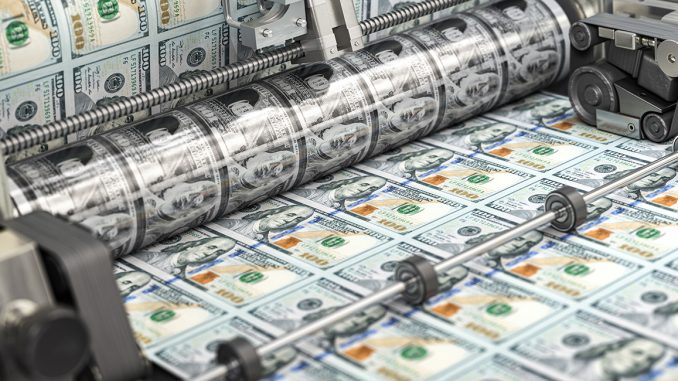
Polls show that Americans are pessimistic about the economy, with inflation as the top concern. That’s understandable, but do they understand where this inflationary surge came from and why Washington’s addiction to government spending threatens the future prosperity of the country?
That may sound hyperbolic, but consider the numbers. The sum of new spending authorizations between 2020 and 2022 was a staggering $7.5 trillion—over $57,400 per household.
According to the Committee for a Responsible Federal Budget, roughly $700 billion (less than 10% of the total) was directed toward public health in the wake of the COVID-19 pandemic. Instead, the spending spree focused on welfare expansions, cash handouts, and opportunistic subsidies for a variety of special interests.
Badly flawed, Keynesian “stimulus” spending escalated even after the economy had stabilized in the summer of 2020.
Legislative packages passed in December 2020 and March 2021 combined to dump trillions of dollars into the economy. Such reckless, unrestrained spending was the definition of inflationary.
The Federal Reserve’s role is often overlooked. The Fed purchased a massive volume of Treasury securities from 2020 through 2021, covering almost all above-baseline spending during the period. This not only created money out of thin air, but also served to provide artificial demand for federal debt at low interest rates.
Without the Fed’s intervention, global markets would have struggled to absorb the historic volume of debt that Washington issued, triggering demand for higher interest rates. Since Congress did not face immediate discipline from debt markets, the spending spree continued long after it was remotely justified.
American families have paid and continue to pay a steep price for the greedy indulgence of politicians. Inflation spiked in 2021 and 2022 with sky-high deficit spending as one of the primary drivers.
Households have lost thousands of dollars in purchasing power as a result. While the rate of inflation is now lower than it was a year ago, prices are still rising faster than before the pandemic. Families are struggling to catch up to the 17% price hike that has already been baked into the system.
The Fed eventually responded with a dramatic increase in interest rates and a reduction of the monetary supply. While that did help to bring the rate of inflation down, it also had serious consequences for financial markets.
This was especially the case for mortgages, as the combination of high list prices and higher interest rates pushed the dream of home ownership even further away for millions of Americans. Over this period, mortgage rates have increased almost 2.5-fold and total interest on a new mortgage on a median home is over $300,000 higher than before.
In turn, higher interest rates have increased the cost of servicing the now mountainous federal debt. This will mean hundreds of billions of dollars per year of deadweight drag on the economy for decades to come.
As the Fitch credit agency explained when it downgraded U.S. creditworthiness in August, there is no light at the end of this tunnel. Driven by the unchecked growth of Social Security and Medicare spending, annual deficits could soon exceed $2 trillion per year indefinitely, further compounding the cost of debt service.
Incredibly, Washington still refuses to act with a modicum of responsibility.
The so-called Fiscal Responsibility Act highlighted this reality. The package was loaded with tens of billions of dollars in budget gimmicks so that Congress could pretend that there would be spending reductions without the political inconvenience of actually reducing spending.
The Biden administration’s supplemental spending request is another way for Congress to dodge the slightest amount of budgeting.
By claiming that spending on Ukraine and natural disasters shouldn’t count toward spending caps, the administration and many congressional leaders are demonstrating that they have no problem with tens of billions in additional deficit spending regardless of the cost to the American people.
It seems increasingly unlikely that the legislators will choose the path of fiscal sanity on their own. Fortunately, there is a somewhat recent example of turning things around.
The tea party movement, which began as a reaction to bailouts and overspending, led to spending restraint and deficit reduction in Washington. While the pandemic-era spending spree undid this progress, the fact remains that public pressure can push Congress in the right direction.
It is crucial for Congress and taxpayers to take federal budgeting seriously as soon as possible. The alternative is the destruction of the growth and prosperity that are at the core of the American dream.
©2023 Tribune Content Agency, LLC.
The Daily Signal publishes a variety of perspectives. Nothing written here is to be construed as representing the views of The Heritage Foundation.
Have an opinion about this article? To sound off, please email letters@DailySignal.com, and we’ll consider publishing your edited remarks in our regular “We Hear You” feature. Remember to include the URL or headline of the article plus your name and town and/or state.

Be the first to comment